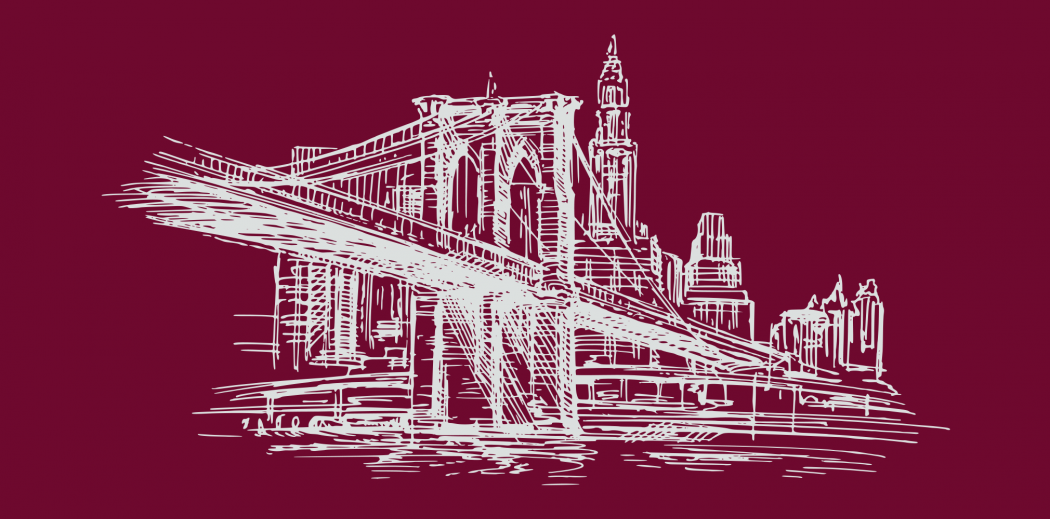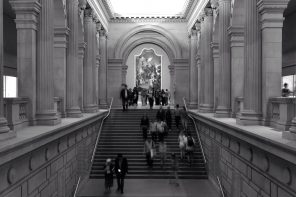It’s 1934, and across America, corks are popping, bathtub gin is becoming a distant memory and glasses slosh with champagne and liquor: Prohibition is over. Underneath Manhattan’s streets were another group of revelers, toasting to beginnings as well as endings. Gathered in wine cellars beneath the Brooklyn Bridge, these revelers were celebrating both the end of the dry era and the beginning of a golden one in which they would be back in business for the first time in two decades.
The cellars had been developed in 1876, seven years before the bridge was operational, and were born out of a problem faced by the bridge’s chief engineer, Washington Roebling. Where Roebling planned to put the bridge sat two popular liquor companies – Luyties & Co on the Manhattan side of the East River, and Racke’s Wine Company on the Brooklyn side. So as not to disrupt business or his roadway, Roebling designed a wine cellar on each bank of the river underneath the anchorages where the bridge’s cables and supports were located. The fact that they helped reduce the $15 million construction costs was just another bonus.
From the 1870s to the 1940s (with a twenty-year time-out during Prohibition) the cellars were rented out to private vendors until the city took over. Since some things never change, in 1901 rent on the Manhattan side was $5,000 a year, while it was only $500 on the Brooklyn side. Beneath the 60,000-ton granite entrances, the cool, dark cellars became the perfect home for fine wines from across the globe. Twisting and winding underneath the chaos of the city, names of French streets were painted on the ceiling while sketches of provincial Europe adorned the walls, along with quotes by Martin Luther, Johann Heinrich Voss, and anonymous drinkers paying tribute to the cellars. A Madonna statue even made a brief appearance until it was stolen in 1942 – its presence led the cellar’s golden age to be called the era of the Blue Grotto for how it resembled the Blue Grotto of Capri.
Perhaps most importantly was the wine. There was Bordeaux, there was Burgundy, there was Champagne. Rumor attests that there was space for one million gallons and that electric lights were slung between the barrels to create a destination that rivaled its European counterparts. It was the Valhalla for winos, a mythic underworld only a select few were invited to peruse – a few so select that it’s believed the vaults were never sufficiently roamed and much of them is unmapped. However, what lies in the labyrinth will largely remain a mystery.
To the despair of modern winos, adventurers, and those in pursuit of a good Instagram, the cellars have been closed and shuttered for years with only the occasional few gaining access. Due to security concerns in World War II, they were closed to the public, primarily used for maintenance supply storage, and, for the most part, forgotten.
Whether these vaults can one day be reopened and we can imagine a world where “aged underneath the Brooklyn Bridge” becomes a hallmark of desired wine remains to be seen. In the meantime, we can uncork a bottle on our couch and reminisce on a time when socialites danced and drank under the streets of New York.








